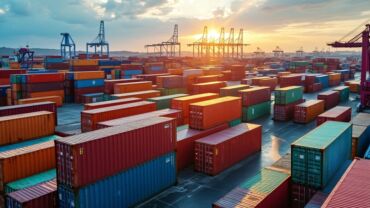The way regulators in different countries throughout Europe and Asia approach ESG rulemaking appears to be diverging, reflecting differing attitudes and goals
Regulators in Asia and Europe have taken divergent approaches towards investment funds that focus on environmental, social and governance (ESG) investments in their respective jurisdictions, an industry official said. The strategies reflect the different regulatory focus areas between authorities in various jurisdictions, as well as the local financial and economic priorities.
Speaking at a recent panel discussion held in Singapore that focused on ESG regulation, Eugenie Shen, managing director and head of asset management at the Asia Securities Industry & Financial Markets Association, said the European Union (E.U.) wants to promote sustainable investment. “The disclosures under the Sustainable Finance Disclosure Regulation (SFDR) [from Europe are] very focused on how managers disclose their investments. What are the principal, adverse impacts or effects, or the negative impacts of investment decisions?
“In Asia, our observation is that Asian regulators are more concerned with risk management,” Shen explained. “They’re not so much into promoting sustainable investment. Ultimately, they would like to do that, but their focus is more on risk management.”
The Monetary Authority of Singapore (MAS) has launched environmental risk management guidelines for asset managers, as well as for banks and insurers. For asset managers, the guidelines set out MAS’s expectations on environmental risk management for all fund management companies and real estate investment trust managers. Items covered in the guidelines include governance and strategy, research and portfolio construction, portfolio risk management, stewardship, and disclosure of environmental risk information.

“In Hong Kong, [regulators] narrowed to just climate-related risks,” said Shen. “At some point they’ll probably expand it to environmental issues beyond climate. So, obviously the concern is really how fund managers and asset managers manage risks related to climate-related or environmental risk.”
Fund labelling
Two of the major focuses for regulators in Asia are investor protection and greenwashing, Shen noted. MAS has rolled out guidelines, which take effect in January 2024, to help reduce greenwashing risks and enable retail investors to better understand the ESG funds in which they invest.
Investment funds under the ESG label will now have to provide relevant information to better substantiate the label. Some of the information required to be disclosed under the guidelines include details on the ESG fund’s investment strategy; the criteria and metrics used to select investments; and any risks and limitations associated with the fund’s strategy. Such disclosures are required to be made on a continuing basis, and investors will also receive annual updates on how well the fund has achieved its ESG focus.
“You’ll see a whole slew of regulation on what an ESG fund is,” Shen said. “In fact, in that sense Europe is lagging behind. It’s only now that the European Securities & Markets Authority is starting to look at fund labelling. But in Asia, we’ve already gotten both the Securities and Futures Commission (SFC) and MAS coming out with rules on what an ESG fund is.”
ESG funds in Europe and Asia
The E.U. sets out mandatory ESG disclosures requirements for asset managers. Under the SFDR, funds that promote environmental or social characteristics (so-called light green funds) are categorized as Article Eight funds, while funds that have sustainable investment as their objective are categorized as Article Nine funds.
“In Asia, we don’t have that distinction. It’s all focused on what is an ESG fund,” Shen said, adding that for example, in Hong Kong, an Article Eight fund can be marketed in the city without changing its name, which might include the words sustainability, sustainable, or green in the name of the fund. The SFC, however, requires a disclaimer to be added following the fund’s name that clarifies that this fund is not an SFC-recognized ESG fund. In Singapore, an Article Eight fund cannot be marketed in the city-state.
To be qualified as an ESG fund in Hong Kong, the fund should invest at least 70% of its net asset value in the companies that satisfy green or sustainable requirements. In Singapore, at least two-thirds of the fund’s net asset value should be invested in green or sustainable companies.
The European perspective is all about promoting sustainable investments while the Asian perspective is more focused on risk management, Shen stated. “The European regulations tend to be much broader, [and] it has a much bigger impact,” she added. “For example, their proposed Corporate Sustainability Due Diligence Directive, which is… not only looks at their own sustainability situation, but the whole supply chain.”
China’s concerns
China has committed to having carbon emissions peak by 2030 and achieving carbon neutrality by 2060. The country’s economic condition, in the meantime, just showed signs of recovery with the first quarter GDP growth rate hitting 4.5%, after the authorities had abruptly ended its draconian zero-Covid policy in late-2022.
Despite the positive reopening and the country’s pledge of net-zero commitment, the Asset Management Association of China, a self-regulatory association, told Shen during her recent trip to mainland China that “they’re worried about their industries,” in particular about cost concerns and how that may impact profitability.
It is of utmost importance for asset managers that operate in multiple jurisdictions to have alignment and harmonization in terms of regulations in their respective operating jurisdiction, Shen explained. “So far, European standards are quite high, but now we’re really seeing Asia deviating [from Europe] and then coming up with some stricter rules than Europe.”







